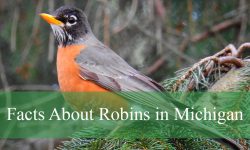When dusk settles over Virginia’s rolling hills and forests, a flicker of movement glides across the fading light — a slender shape, russet against the shadows, moving with quiet confidence. Its eyes flash amber, its tail sweeps like a plume of smoke, and in a heartbeat, it vanishes into the underbrush. This is the fox in Virginia, one of the most graceful, intelligent, and misunderstood creatures in the Commonwealth’s wilderness.
From the misty Blue Ridge Mountains to the Chesapeake’s wetlands, foxes have long captured human fascination — symbols of cunning, adaptability, and silent mastery of the night. But behind their elegant appearance lies a story of survival, science, and surprising complexity.
In this in-depth exploration, we uncover the unknown facts about foxes in Virginia that reveal how these animals have not only survived but thrived across centuries of changing landscapes, blending wild instinct with remarkable intelligence.
Meet Virginia’s Foxes

Two Species, One State
Virginia is home to two distinct species of foxes — the red fox (Vulpes vulpes) and the gray fox (Urocyon cinereoargenteus). Though often mistaken for one another, their differences tell a fascinating story of evolution and adaptation.
The red fox is sleek, long-legged, and classically beautiful, with its bright orange coat, black legs, and bushy white-tipped tail. It’s the world’s most widespread wild canid, found across nearly every continent — and thrives from Virginia’s cities to its farmland.
The gray fox, meanwhile, is slightly smaller and darker, with grizzled fur and a black-tipped tail. Unlike its red cousin, it possesses a remarkable trait few canids share: the ability to climb trees. Using hooked claws, it ascends trunks and branches to escape predators or rest safely above the forest floor.
Together, these two species embody Virginia’s ecological diversity — one favoring open country and suburban edges, the other haunting wooded hollows and mountain slopes.
Fox Distribution Across Virginia
The red fox is most common in northern and eastern Virginia, where open fields, pastures, and suburban developments provide abundant prey. They thrive even in urban environments — from Richmond’s parks to the outskirts of Norfolk.
The gray fox, on the other hand, dominates the western and southern regions, especially in the Blue Ridge Mountains, Shenandoah Valley, and Appalachian foothills. Dense forests suit their climbing ability and offer concealment from predators and humans alike.
Their overlapping ranges create a fascinating coexistence — each species carving out its own niche in Virginia’s varied terrain.
Anatomy of a Skilled Survivor
Designed for Stealth and Speed
Everything about a fox’s anatomy is built for precision survival. With slender bodies, sharp senses, and cushioned paws that move silently, foxes in Virginia are expert hunters and escape artists.
A fox’s hearing is exceptional — capable of detecting the faint rustle of a mouse under several inches of snow. Its sense of smell rivals that of domestic dogs, while its eyes are adapted for low light, allowing near-perfect night vision.
When hunting, foxes use a distinctive high leap — known as “mousing” — to pounce on hidden prey with pinpoint accuracy. Their agility and speed make them capable of bursts up to 30 miles per hour, yet they rely more on cunning than brute force.
The Secret Language of the Tail
A fox’s tail, called a brush, is not just for beauty. It acts as a balance tool, a warm blanket in winter, and a signal flag in communication. During hunts or territorial disputes, tail positions convey dominance, submission, or alertness.
In the snow-covered fields of Virginia winters, a curled tail wrapped around a sleeping fox keeps it insulated — a simple yet vital survival adaptation that defines these resourceful canids.
The Hidden Homes of Virginia’s Foxes
Denning and Shelter Habits
Foxes prefer dens for raising their young but don’t rely on them year-round. Most of the time, they sleep above ground, concealed in grass, hollow logs, or brush piles.
When breeding season arrives, however, they excavate burrows or repurpose abandoned groundhog or rabbit holes. Inside, the den may stretch several feet underground, with multiple entrances and nesting chambers lined with leaves and fur.
In Virginia’s rural fields, these dens often appear on gentle slopes near wood edges or streambanks — perfectly placed to balance cover and visibility.
Urban Foxes
The adaptability of red foxes in Virginia is most evident in suburban and city environments. Urban foxes den beneath sheds, porches, or storm drains, venturing out at night to feed on rodents, birds, and discarded food.
Despite their proximity to humans, they remain shy and rarely pose risks. Instead, they quietly keep rodent populations in check, performing a natural pest control service that often goes unnoticed.
Their presence in cities like Arlington, Charlottesville, and Richmond highlights their ability to coexist with human expansion without losing their wild instincts.
Diet and Hunting Behavior
Nature’s Opportunists
Both red and gray foxes are omnivores, though their diets lean heavily toward meat. In Virginia, their menu includes rabbits, squirrels, voles, mice, birds, and insects. They also eat fruits, berries, and occasionally corn or nuts, depending on the season.
This diverse diet allows them to thrive in nearly any environment. In summer, they hunt early morning or evening to avoid heat; in winter, they scavenge and rely on cached food buried during warmer months.
Their intelligence shines in hunting strategy — foxes often stalk prey quietly, then perform their signature leap to deliver a swift bite to the neck. In open meadows, observers sometimes spot them listening intently before plunging headfirst into the grass — a graceful ballet of survival.
Caching for the Future
Foxes are planners. When food is abundant, they bury extra kills in shallow holes and mark them with scent. These caches become vital reserves during harsh winters or lean periods.
Foxes in Virginia have been observed returning to these hidden stores weeks later, relying on precise memory and scent cues to locate them — an impressive display of cognitive ability and foresight.
Reproduction and Family Life
Courtship and Pair Bonds
Breeding season for Virginia foxes begins in January or February. During this time, their nocturnal calls — eerie barks and screams — echo across fields and forests. These vocalizations are part of the courtship ritual as males compete for mates.
Once paired, foxes often form temporary monogamous bonds lasting through the rearing of the litter. Both parents participate in raising the kits, sharing food and protecting the den.
Gestation lasts about 52 days, and by March or April, the first kits — usually four to six — are born blind and helpless.
Growing Up in the Den
For the first month, the vixen (female) remains underground with her young while the male brings food. By six weeks, the kits begin exploring outside the den, tumbling in play that hones their hunting and coordination skills.
By late summer, the family disbands. The young venture out to claim their own territories, while the adults return to solitary lives until the next breeding season.
This cycle of independence and renewal sustains Virginia’s fox population year after year — a rhythm as old as the hills themselves.
The Role of Foxes in Virginia’s Ecosystems
Balancing Nature’s Scales
Foxes serve as essential regulators within Virginia’s ecosystems. By preying on rodents and small mammals, they keep populations of mice and voles — notorious crop and disease carriers — under control.
They also limit the spread of invasive species by consuming insects and fruits of non-native plants. In return, they serve as prey for larger predators like coyotes, bobcats, and eagles, completing the circle of life in a balanced natural web.
Without foxes in Virginia, rodent populations would surge, leading to agricultural losses and ecological imbalance. Their silent work maintains the health of both farmland and forest.
The Ecological Middle Ground
Foxes occupy a unique niche between large carnivores and small scavengers. Their omnivorous habits mean they influence both prey and plant communities — spreading seeds through fruit consumption and reducing disease vectors through scavenging.
In this sense, they are ecological intermediaries, connecting the upper and lower tiers of Virginia’s food web with grace and efficiency.
Myths, Misunderstandings, and Reality
The Myth of the Chicken Thief
For centuries, foxes have been maligned as livestock thieves. While red foxes occasionally raid poultry coops, such behavior is rare and often linked to easy access rather than habit. Properly secured enclosures prevent most incidents.
In truth, foxes prefer wild prey and typically avoid confrontation. They’re shy, intelligent, and wary — not the reckless marauders old folklore portrays them to be.
Rabies and Health Concerns
Although foxes can carry rabies, the risk is low. Virginia’s Department of Wildlife Resources records few cases annually compared to raccoons or bats. Most foxes encountered are healthy, their occasional boldness a result of curiosity or hunger, not aggression.
Like all wild animals, they should be admired from a distance — respected, not feared.
Fox Intelligence and Emotion
Studies reveal foxes possess problem-solving skills on par with domestic dogs. They recognize human faces, navigate complex environments, and even engage in playful behavior when not hunting.
Observers in Virginia’s countryside have documented foxes playing with sticks, toys, and even each other — behavior associated with intelligence and social flexibility. They exhibit a range of emotions: curiosity, affection, caution, and boldness.
They are not mindless predators but sentient survivors navigating the balance between instinct and adaptation.
Foxes and Humans in Virginia
Rural and Urban Coexistence
In rural Virginia, foxes are valued for controlling rodents that damage crops and spread disease. In suburban areas, they’ve become quiet neighbors — seen darting through yards or trotting along fences at dawn.
Most interactions are peaceful. Homeowners may spot a fox passing through but need not worry unless pets or poultry are unsecured. Foxes avoid humans whenever possible and pose minimal threat.
To coexist, residents can remove outdoor food sources, secure trash, and protect small animals with proper enclosures — simple measures ensuring balance between human space and wildlife.
Cultural and Historical Significance
Foxes hold a storied place in Virginia’s culture. Early settlers admired their cunning and beauty, inspiring tales and traditions — most famously fox hunting, once a popular sport imported from England.
Though controversial today, the tradition shaped Virginia’s rural identity, leaving cultural imprints in place names, festivals, and literature. The modern shift toward wildlife conservation reflects a new respect: seeing foxes not as quarry but as integral threads in the state’s natural tapestry.
Climate Change and Conservation
Shifting Habitats
Rising temperatures and urban sprawl are slowly altering fox habitats. The red fox adapts easily to open areas and human presence, but the gray fox, more reliant on dense woodlands, faces greater challenges as forests fragment.
Conservationists emphasize preserving wooded corridors and minimizing pesticide use to protect prey species and maintain ecological balance.
Protected but Persecuted
While foxes in Virginia are legally classified as furbearers and can be hunted or trapped under regulated seasons, their populations remain stable. Wildlife agencies stress ethical practices and ecological awareness, reminding hunters that sustainable management ensures long-term stability.
Public education has also shifted perception — more Virginians now see foxes as neighbors rather than nuisances, recognizing their vital role in controlling pests and enriching biodiversity.
Surprising and Little-Known Facts About Foxes in Virginia
-
The gray fox is one of the few canine species that can climb trees.
-
A red fox’s tail makes up one-third of its total body length.
-
Foxes can hear a mouse squeak from over 100 feet away.
-
Kits are born blind and begin hunting practice at just 8 weeks old.
-
Foxes use over 20 distinct vocal sounds to communicate.
-
A fox’s footprints form a straight line — unique among wild canids.
-
Red and gray foxes rarely interbreed due to habitat and behavioral differences.
-
Urban foxes have smaller territories but higher food availability.
-
A fox’s sense of smell is so sharp it can detect buried prey beneath a foot of snow.
-
Foxes in Virginia live an average of 3–5 years in the wild, longer in protected areas.
FAQs About Foxes in Virginia
How many fox species live in Virginia?
Two — the red fox and the gray fox — both native and widespread across the state.
Do foxes hibernate in winter?
No. They remain active year-round, using thicker fur and dens for warmth.
Are foxes dangerous to pets?
Rarely. Small pets should be kept indoors or in secure enclosures at night.
What do foxes eat the most?
Small mammals like rabbits, mice, and voles, along with fruits, insects, and berries.
Do foxes bark like dogs?
Yes. They produce high-pitched barks, screams, and howls used for communication.
Where do foxes live in Virginia?
Everywhere — from the mountains to the coast, in forests, farms, and suburban neighborhoods.
Are foxes protected by law?
They are regulated under Virginia’s wildlife management laws, allowing limited, licensed trapping and hunting.
Do red and gray foxes compete?
Sometimes, but their different habitats reduce direct competition.
How can I deter foxes from my property?
Remove food sources, secure garbage, and close crawl spaces to discourage denning.
Are foxes good for the environment?
Absolutely. They control rodent populations, disperse seeds, and maintain ecological balance.
Final Thoughts
The foxes of Virginia are masters of adaptability — elegant predators that balance beauty, intelligence, and instinct in perfect harmony. From quiet suburban streets to the wild Appalachian slopes, they embody nature’s ingenuity, surviving in landscapes that continue to evolve.
Their presence tells a story of resilience: creatures neither feared nor tamed, thriving in the margins between forest and field. To see a fox dart across a meadow at twilight is to glimpse the wild heart of Virginia — clever, enduring, and untamed.
The truth about foxes in Virginia is that they’re not just survivors; they’re sculptors of the ecosystem, silent sentinels of the land’s ancient rhythm — guardians of balance beneath the Southern moon.






